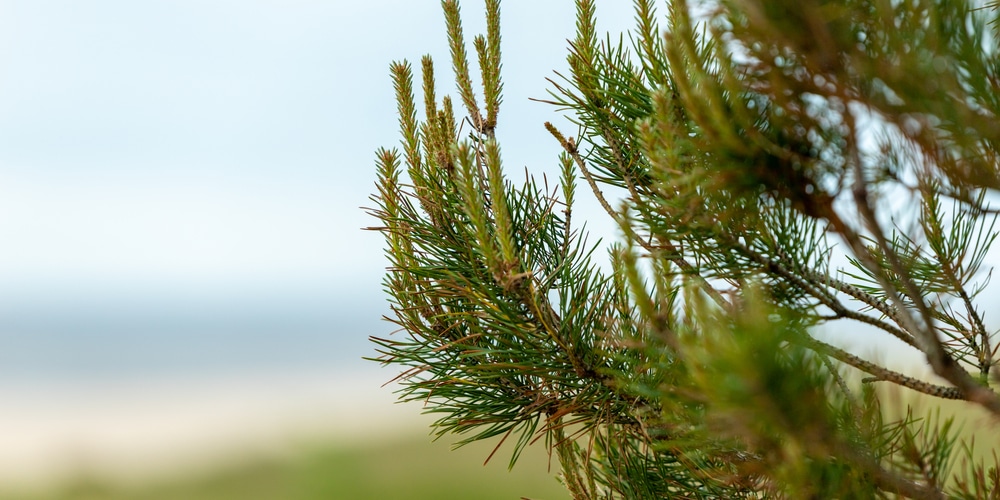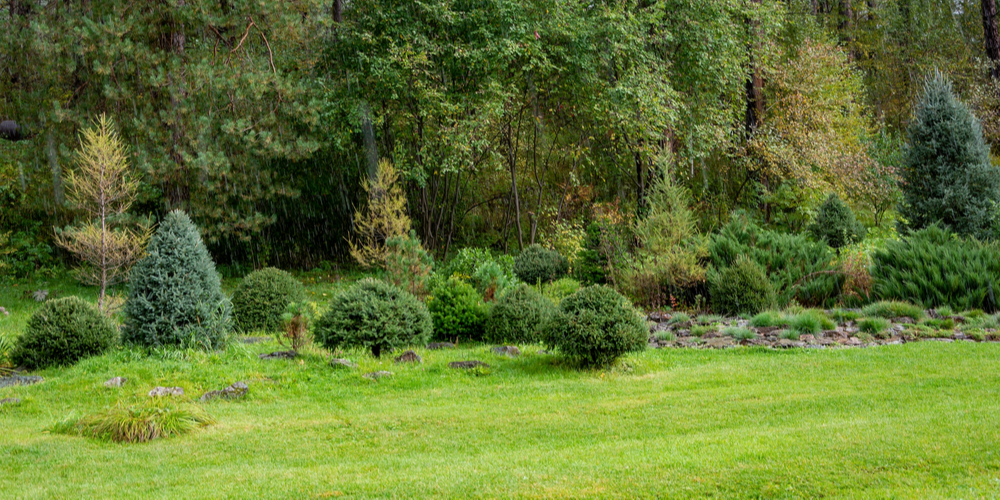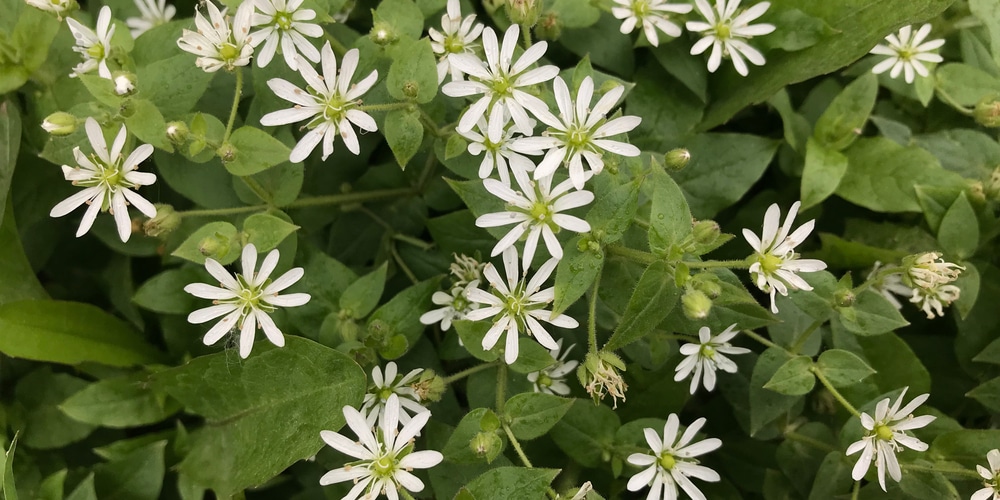You may have struggled to find a plant that can survive—let alone thrive—when planted under a pine tree. This can be for several reasons, none of which have to do with the pine tree producing chemicals to kill off competing plants (despite the common myth).
Despite the struggles, you absolutely can grow many plants under a pine tree. Those plants just need to be able to thrive in the conditions that you’ll be planting them in.
Reasons Why Plants Struggle Under Pine Trees

While pine trees do better in acidic soil, the tree isn’t responsible for the soil acidity. There is nothing about the tree or its fallen leaves that affect the soil in this way. Meaning it is safe to leave pine needles on the ground if they aren’t a fire hazard.
The likely reason why plants may struggle to thrive under a pine tree is that there is a lot of competition for water and nutrients. Pine tree roots are shallow and numerous, so the tree can gather up as much water and nutrients as possible.
Additionally, if you factor in the dense foliage of pine trees, which creates shaded conditions and even affects the amount of water that reaches the ground, the area under a pine tree becomes hard to grow in. Sprouts or unestablished plants that need a lot of water and nutrients may just not have the ability to get what they need.
As long as you understand these conditions while selecting your plants, you will have a thriving environment under your pine tree.
Low-Moisture Low-Light Plants

Choose plants that can grow in partial to full shade and with dry to medium moisture conditions. Keep in mind the size of the plant because you want them to fit under the tree without issue. Shorter plants may be preferable if the tree’s branches hang low.
Shrubs
Shrubs can be great for adding height variation to your garden. Flowering shrubs or those with colorful leaves can add more interest as well.
Sarcococca
Sarcococca (sarcococca hookeriana var. humilis) is a flowering shrub. It can grow to ~5 feet in height and spreads slowly. Also known as “sweet box,” this shrub grows well in partial to full shade with medium moisture. Sarcococca thrives in rich, acidic, and moist soil. Watering may be necessary to keep moisture levels consistent. Plant this shrub in the shaded area under the tree, as sun exposure can make the leaves lose their luster.
Japanese Skimmia
Japanese skimmia (skimmia japonica) does well in partial to full shade and medium moisture. This shrub is low maintenance and tolerates heavy shade.
Soil conditions for this plant may be difficult to meet if the soil isn’t naturally rich, humusy, and well-drained. Avoid planting this shrub near areas with full sun, as the leaves may scorch.
Perennials
Flowering plants add color and beauty to a space. Many plants can thrive in low light conditions and still flower.
White Wood Aster
Eurybia divaricata, commonly known as white wood aster, the plant has showy white flowers and can attract butterflies. White wood aster thrives in the shade and grows well in dry to medium soil. Eurybia divaricata can grow 1 to 2.5 feet tall, with a similar spread. This plant tolerates many adverse soil conditions, including drought and shallow-rocky soil.
Pigsqueak
Pigsqueak (bergenia cordifolia) is a perennial often used as a groundcover. This plant is tolerant of various soils and easily grows in average, medium, and well-drained soil. But it prefers humusy and moist soil conditions. In the southern United States, pigsqueak is evergreen—colder climates may cause winter damage that should be removed by early spring.
Bergenia tolerates deer, rabbits, heavy shade, and erosion.
Chinese Astilbe
Chinese astilbe (astilbe chinensis var. taquetii) has beautiful, deep lilac flowers in the summer. This plant grows in partial to full shade with dry to medium soil conditions.
This flower is easily grown in average, medium, and well-drained soils, though it prefers moist, humusy, and rich soil. Soil should not be allowed to dry out. This plant tolerates heavy shade and black walnut.
Conclusion
Many plants thrive in the heavy shade and low-moisture conditions found under pine trees, and this list is nowhere near exhaustive.
Established pine trees are tough competition for anything newly-planted, so give a bit more care to those new plants, and eventually, you will have a wonderful shaded garden.
